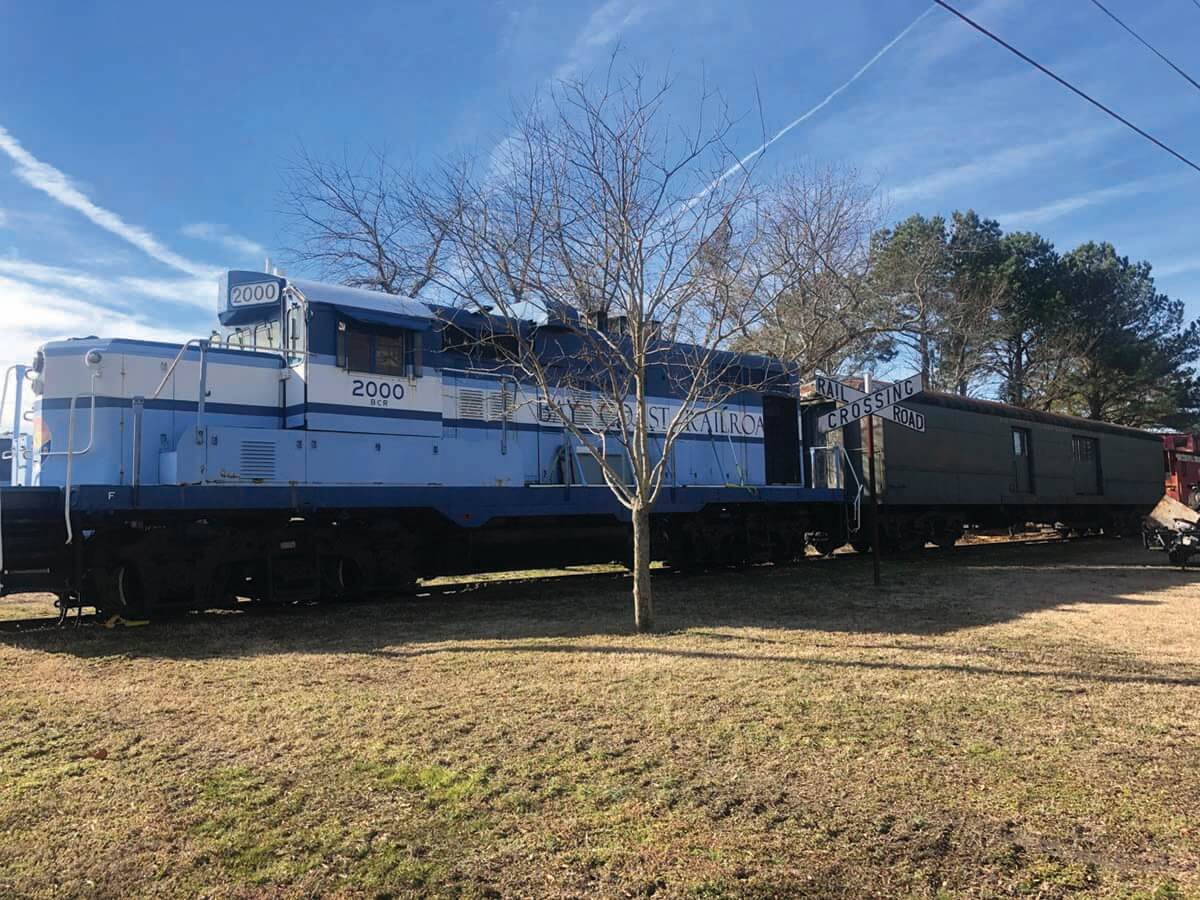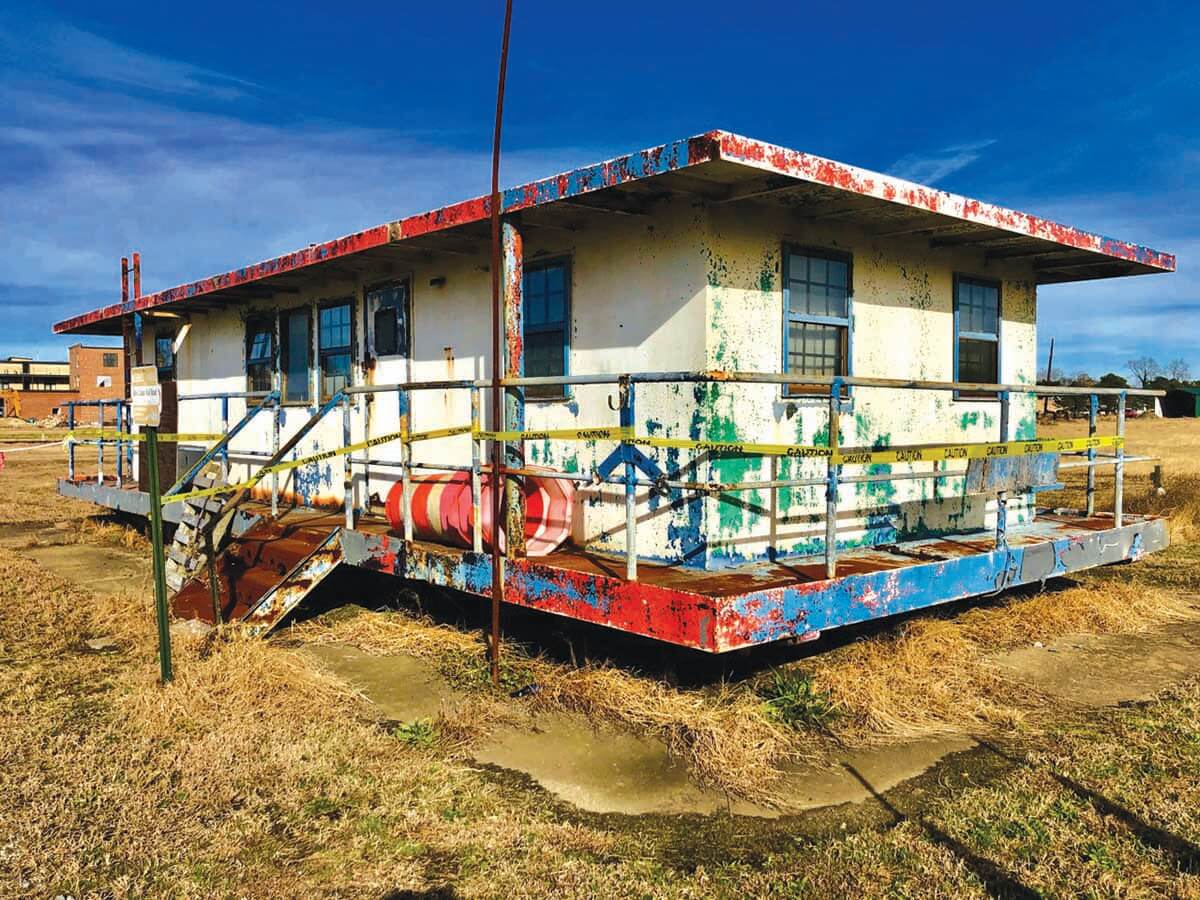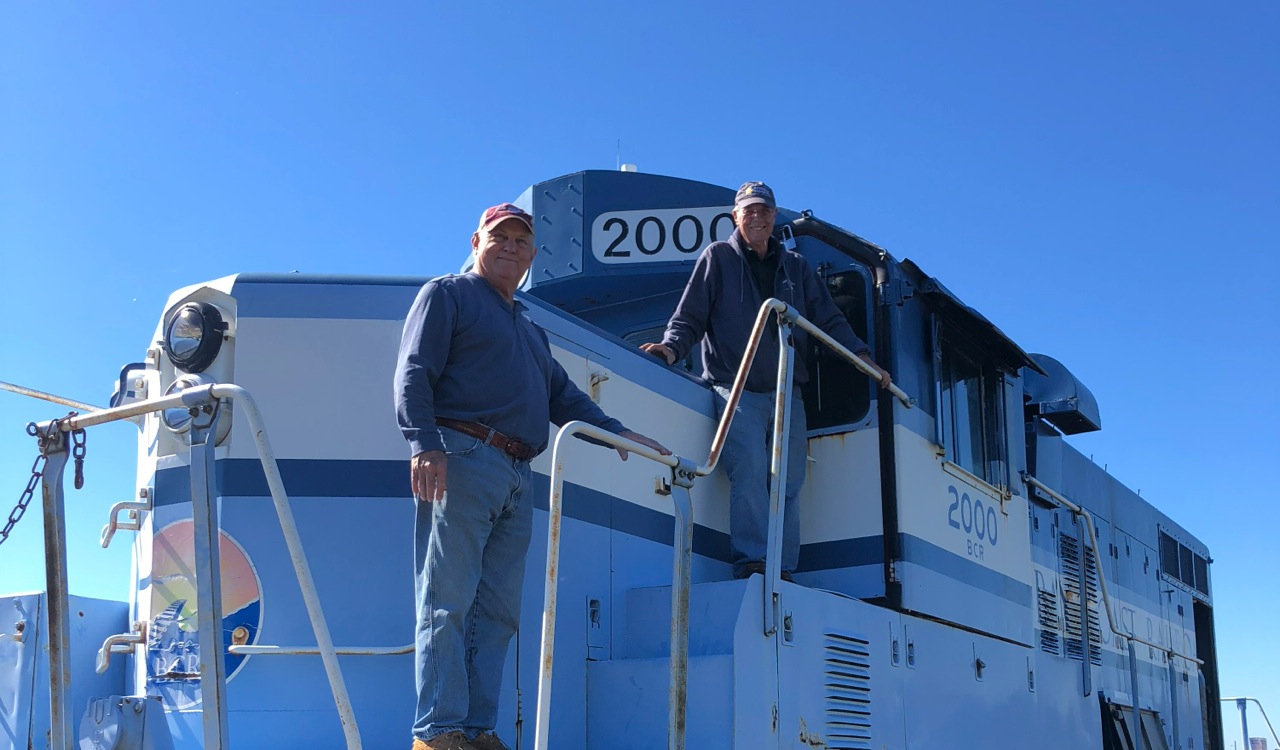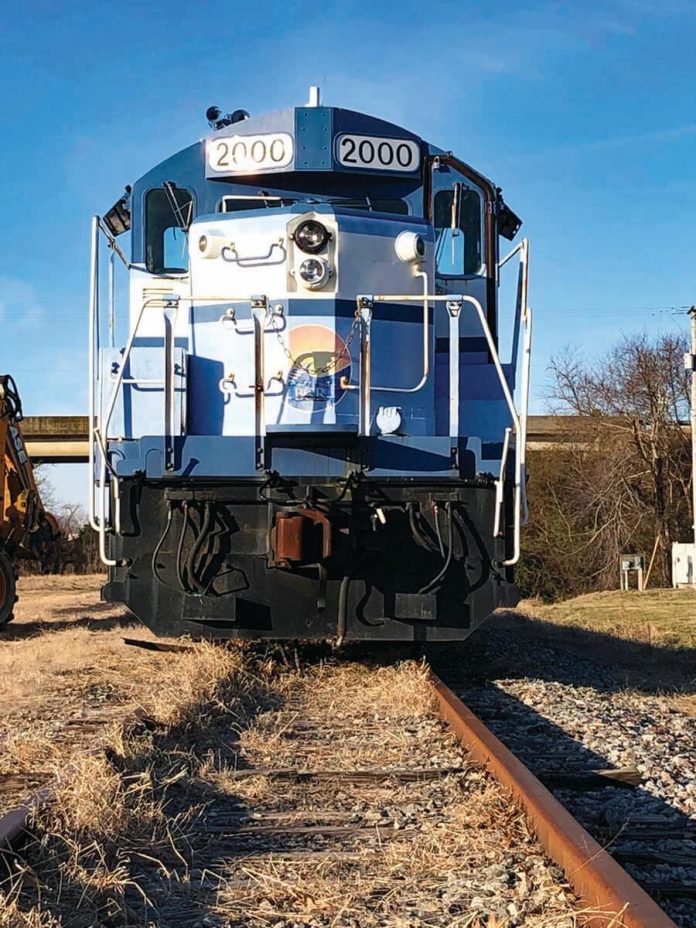Submitted Article and Photos – Times are changing in Cape Charles. There’s downtown renewal, a surge in tourism, and the beach draws ever more bathers. And then there is the railroad.
Cape Charles was created by the railroad and sustained by it for most of the town’s history. But last fall, Bay Coast Railroad, which had leased the railroad since 2006, formally ceased operations and ended more than 120 years of railroad service on the Eastern Shore.
It was announced that the Cape Charles Railroad yard would be cleared, with all its contents sold for scrap or otherwise disposed. The owners of the railroad, knowing the dedication of the Cape Charles Historical Society to preserve the town’s railroad history, offered to donate any artifacts, including railroad cars, that could be moved within 90 days.
The historical society acquired five railroad cars, including the 2000 locomotive, the pilot house off the Captain Edward Richardson car float barge, a locked safe dating from the New York, Philadelphia, and Norfolk Railroad (NYP&N) era, signage, and a host of other objects and documents that many longtime railroad employees helped identify.
Now the Cape Charles Historical Society is charged with keeping this history alive. All the cars and the pilothouse need costly repairs to preserve them and make them accessible and safe for visitors, as well as educational signage.
Historical society members hope the pilothouse will become a museum annex dedicated to railroad history. But the acquisitions came at a price – about $30,000 so far. Moving the cars was complex, due to the deterioration of the railroad yard tracks; moving the pilot house from the railroad yard to the museum cost $15,000, and the pilothouse needs a foundation.
The railroad will be the core of the Cape Charles Historical Society’s 2020 exhibits.
Trade has always been essential to life on the Eastern Shore. People relied on commerce with markets in the north and across the Bay, with transport provided by log canoes and sailing vessels – the famous skipjacks and others.
With the coming of the railroad in 1884, trade quickly expanded. Shore farmers, watermen and businesses used the NYP&N to transport their products, and in return goods and visitors came south. Car float barges, elegant steamers, and later, automobile ferries, connected rail service to cities across the Bay. The Eastern Shore economy thrived from the late 19th century to the mid-20th century.
The NYP&N joined the famous Pennsylvania Railroad (PRR) and operated well into the 20th century, when it was passed on to several other railroad companies.
Founded and built in 1884 as the terminus of the railroad and the port from which the ships and barges embarked across the bay, Cape Charles bustled with activity for years. With four trains a day from New York and barges and two or three passenger steamers (later ferries) crossing back and forth, the town was a profitable intermodal transportation hub. Jobs on the trains, steamers, and the large railroad maintenance yard were plentiful and well-paying, drawing new residents.
But times changed. As automobile and truck transport replaced trains, the importance of the railroad to the Shore dwindled after World War II. In 1950, the ferries moved to Kiptopeke Terminal seven miles south. PRR steamer service ceased in 1953. Passenger trains stopped running in 1958. Ferry service across the bay ended with the opening of the Chesapeake Bay Bridge-Tunnel in 1964.
For much of the Cape Charles railroad’s later life, it was the Eastern Shore Railroad, but in 2006 it was leased to Bay Coast Railroad, by the railroad’s owners, Canonie Atlantic Co.
Bay Coast operated the railroad line for industrial transport, but with insufficient business it stopped running trains in May 2018 and closed. In the past year, the former Cape Charles railroad yard, its associated buildings and remaining cars and tracks have been cleared in preparation for sale of the property.
Many newcomers and visitors may not have seen trains coming into town and the car float barges loaded with rail cars at the harbor, but they are why the small, charming town of Cape Charles is here. The railroad is the history of Cape Charles.
Now on site at the Cape Charles Museum are a modernized 1956 General Motors GP 9 diesel locomotive, nickel plate railroad caboose, Richmond, Fredericksburg, and Potomac baggage car, former GATX (General American Transportation Corporation) tanker, mid-century short boxcar, 1953 army surplus flatcar, and mid-1930s steam-era short-sided gondola car. Three remaining gondola cars were donated to other museums. The pilot house of the Captain Edward Richardson railroad car float barge is on the west side of the museum building. The safe has been opened and is inside the museum.
The Cape Charles Museum displays and archives have always contained lots of railroad history, and the historical society learns every day, from conversations with museum visitors and their comments left in the visitor register, how fascinating this history is to people; they thank the society for saving and displaying it.
The historical society hopes the community will participate in preserving this transformative railroad history by providing financial assistance and other volunteer efforts. Contributions to the Cape Charles Railroad Preservation Fund can be sent to the Cape Charles Historical Society, P.O. Box 11, Cape Charles VA 23310, or through our website capecharlesmuseum.org
Donations are tax deductible. Volunteers are also welcome for a variety of projects.
The Rosenwald Cape Charles Elementary School is still the featured exhibit at the Cape Charles Museum, but there are also railroad items, including models of the steamers and the railroad barge.
The Cape Charles Museum is open Monday through Friday from 10 a.m. until 2 p.m., Saturday from 10 a.m. until 5 p.m., and Sunday, 1-5 p.m.








